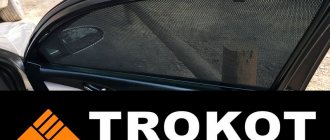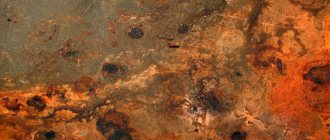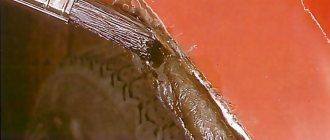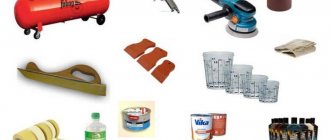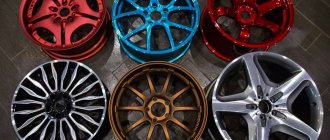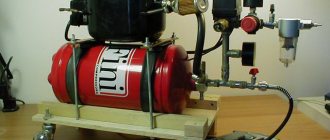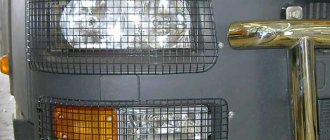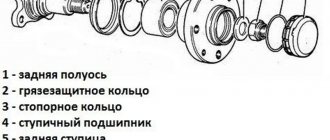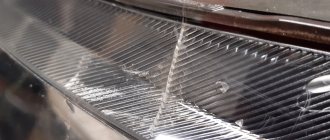Metal is durable, reliable, strong, but, unfortunately, it is susceptible to corrosive destructive processes. To protect the material from this harmful effect, various protection methods have been developed, which are divided into two groups:
- Electrochemical. Based on the creation of electrical potentials and galvanic steam, they involve the use of a more active metal that is subject to destruction, but protects the main structure.
- Conservation. These methods involve the formation of a protective layer that prevents corrosive factors from affecting the metal.
Each method has its positive and negative aspects. Electrochemical, as a rule, is used in conjunction with conservation, and not in its pure form. The advantages of both directions of protection are combined by a product such as Tsinkar, which appeared in 2002 and is becoming increasingly popular year after year.
Rust converter "Tsinkar"
The product, developed on the basis of zinc and manganese salts, and orthophosphoric acid, forms an active protective coating on the metal surface. Manganese compounds create an alloying effect, and zinc salts are activated when foci of electrochemical corrosion occur.
The action of the drug is based on the destruction of oxide forms of iron (rust), which are converted into phosphates, and the simultaneous occurrence of a reaction involving manganese and zinc. This allows you to obtain not only a protective, but also a strengthened layer. This efficiency is due to the competent redistribution and combination of components, which monophosphate formulations lack.
Operating principle of the converter
All items made of iron and steel are highly durable and durable. Their only disadvantage is their susceptibility to corrosion, which can quickly, within 2-3 years, damage the metal part.
This problem is especially familiar to car enthusiasts:
under the influence of dampness and chemical road reagents, a coating of rust appears on unprotected metal parts of the body and suspension, which begins to corrode the metal.
To prevent this, special protective compounds against rust are used, which operate on two basic principles:
- Electrochemical protection. Based on the use of the principle of galvanic couples made of various metal materials. The main role here is played by the metal, which has greater chemical activity. It is first exposed to rust, as if taking upon itself the full blow of the aggressive action of the external environment. When destroyed, the active component neutralizes this effect on the metal part treated with a protective composition.
- Conservation method. This method of rust protection involves the formation of a thin protective film on the treated surface. This way, it is isolated from the action of aggressive external factors that cause corrosion. Both methods have their advantages and disadvantages. Thus, electrochemical protection is not effective enough without the simultaneous use of a conservation method.
The Tsinkar rust converter uses both of these methods of protection, which has significantly increased its effectiveness compared to many other products of a similar purpose.
The main components of the Tsinkar converter include salts of chemically active metals - zinc and manganese.
Additionally, it contains orthophosphoric acid, which, when interacting with the surface being treated, forms a thin protective film.
Manganese salts create an alloying effect, making the metal more resistant to destructive factors.
Zinc compounds interact with chemicals that cause rust, neutralizing them.
Thanks to its carefully calibrated composition, the Tsinkar rust converter is capable of not only protecting metal from corrosion, but also neutralizing existing sources of damage.
The drug destroys iron oxides, converting them into phosphates - neutral compounds that are absolutely not dangerous to the metal.
Monophosphate anti-corrosion agents do not have this effect.
Application area
The product is intended for metal processing, but it works best when coating steel, with the purpose of transformation - removing corrosive lesions, subsequent protection of coated areas and structures from atmospheric and climatic influences that lead to the formation of rust.
The Tsinkar converter is used to cover metal structures: roofs, vehicles, garages, supports (trusses) of overpasses and bridges, products with rivet type connections and welded seams. The drug is also used for domestic purposes. It is used to clean tools, steel fixtures and elements from corrosion.
Composition and principle of action
A rust converter means a special product consisting of special chemical compounds that, upon contact with corrosion products, trigger the process of converting them into a dense protective film covering the metal surface. For example, a common component of such a product is dissolved orthophosphoric acid. Some manufacturers replace the acid with a zinc salt. When the converter comes into contact with rust, a layer of zinc compounds is formed. It has long been a known and confirmed fact that galvanized steel is less susceptible to corrosion than ordinary metal.
This composition is available in three forms:
- solution;
- emulsion;
- suspension.
Due to the high density of contact with the surface and excellent protective properties, the rust converter is used before applying paintwork as an intermediate element.
The acid contained in the rust converter acts on iron oxides and converts them into orthophosphate salt. Other components of the composition also participate in the chemical process, thanks to which the layer formed on the surface is in a stable inactive state.
Rust converters containing zinc compounds act differently. Zinc atoms begin to bond with oxygen atoms and ultimately form a special film on the metal surface, which performs a protective function against the appearance and further formation of rust.
Release form and consumption rate
Anti-rust agent “Tsinkar” is available in several versions:
- regular bottles with caps with a capacity of 60, 500, 1000 ml;
- modified half-liter bottles with a sprayer;
- 10 liter canisters.
The shape of the container affects ease of use. If you plan to coat products with a complex configuration or a hard-to-reach area, it is better to choose a bottle equipped with a trigger (spray) that allows you to evenly treat the entire surface.
The amount of material consumed is influenced by two factors: the method of application and the number of layers. To purchase the required amount of the composition, you need to know that for a single application on each square meter of a metal surface, from 110 to 340 grams are required.
Area of use
"Tsinkar" is intended to protect against rust any structures exposed to aggressive substances - primarily dampness. This is a wide range of metal products used outdoors.
According to the instructions on the package, the converter is suitable for processing a wide range of metal products:
- Car garages, kiosks, boxes;
- Power line supports;
- Load-bearing structures of metal bridges;
- Fencing and decorative gardening structures.
“Tsinkar” will be especially useful for car owners. Operating a car, even in the city, always occurs in difficult conditions.
Constant dampness, an atmosphere filled with aggressive chemicals, and reagents on the roads lead to corrosion on the elements of the car body and suspension. Often, even a protective factory coating cannot save you from it: the slightest scratch, and rust begins its destructive work. This can be avoided by promptly treating the damaged area with a layer of Tsinkar.
The anti-corrosion agent comes on sale in several versions:
- Small bottles, with a capacity from 60 ml to 1 liter;
- Bottles of the same capacity, but equipped with a spray nozzle;
- 10 liter canisters, used when it is necessary to treat large surfaces.
Instructions for use
“Tsinkar” is most often used by car enthusiasts. The vehicle owner can entrust the anti-rust treatment to service station professionals or do the entire job themselves. It is better to know how to use this product, since it may be necessary to get rid of corrosion on metal not only on a car, but also on other steel structures.
Even a beginner will not have any particular difficulties with applying the drug. This work does not require any special skills, specialized tools or materials. The main thing is to take precautions, since the composition is a fairly caustic substance, and to follow a clear sequence of actions.
Rules of application
In order to use rust converter effectively, you must follow the rules. First, the contaminated surface must be cleaned mechanically and degreased (if necessary), not only the rusty spot itself, but also a few centimeters around it. After this, apply the product using a sprayer or brush. Dry naturally (approximate time is indicated in the instructions).
For more effective removal of rust stains, repeat the procedure 2-3 times.
It should also be taken into account that sometimes the chemical composition is applied to a dry surface, and sometimes to a moistened one.
It should also be remembered that the converter does not need to be washed off; moisture ingress is unacceptable.
After treatment, a phosphate film forms on the cleaned surface, which then absorbs paints and primers well.
Subsequent painting should be done on a dry surface no earlier than twelve, or better yet, wait twenty-four hours after finishing the chemical treatment.
The recommended air temperature for all work is not lower than 5 degrees Celsius.
When cleaning rust stains, on average, 100-200 grams of a chemical solution per meter is required and depends on the amount and method of application, the thickness of the rust.
Surface preparation and converter application
The product cannot be applied to the surface without first cleaning the metal from loose, flaking rust. To remove, you can use absolutely any abrasive product without any restrictions. You can use a metal brush and other tools. This also applies to painted surfaces. You definitely need to get rid of the old paint.
The container in which Tsinkar is sold is opaque, so the consumer cannot see that a residue is forming at the bottom. To ensure that the mixture is completely ready for use, the bottle or canister must be shaken thoroughly and only then used. If the converter has a trigger, then it is applied by spraying. In other cases, use a roller or brush.
Application order
Before applying “Tsinkar”, the surface to be treated is pre-prepared.
Preparation consists of thoroughly cleaning the corroded area from loose particles of rust and old paint. To do this, you can use a spatula, a stiff brush, a large emery cloth, or just a knife.
Next, you need to prepare the rust converter itself for application. Over time, a sediment inevitably forms at the bottom of the container, which is formed by dissolved metal salts. Therefore, the bottle or canister containing “Tsinkar” must be shaken thoroughly, and only then applied to the surface to be treated.
All working components included in the anti-corrosion agent will be evenly distributed throughout the entire volume.
You can paint a surface affected by rust with a simple brush or roller. True, in these cases the material consumption increases.
To save money, it is recommended to use rust converter bottles equipped with a spray nozzle.
In a situation where you need to treat a large surface area, you can use a paint spray gun. This will allow you to apply the product in a thin, even layer.
The average consumption of anti-rust agent is up to 350 ml per m2 when applied in one layer.
It is allowed, to enhance the protective effect, to apply anti-corrosion liquid in two or three layers. In this case, the next layer is applied only after the previous one has completely dried.
The drying time of the layer depends on the temperature and humidity of the surrounding air. On average, this is half an hour to 1.5 hours - drying can be judged by the appearance of a grayish-white coating.
Terms of use
Re-processing of the metal surface is allowed only after the first layer has completely dried. This is evidenced by the formation of a whitish or grayish coating. Go over it with a stiff hair brush. This allows you to get rid of unreacted elements of the composition and prepare the coating for the next cycle.
Each new layer enhances the physical and chemical qualities of the anti-corrosion coating, guaranteeing reliable protection against external factors that lead to rust. The number of applications carried out has no restrictions.
You should refrain from the desire to save the converter. It is not recommended to limit yourself to one layer, especially when the product is used in critical areas and structures.
The best option is to carry out two treatments. If the product is needed only to get rid of rust, but not to extend the life of a metal product, one coating will be enough.
Features of using anti-rust products
Even if you follow the instructions strictly, using a rust converter does not always give the desired effect. To effectively and permanently get rid of corrosion, it is recommended to adhere to the following rules:
- use only proven brands of auto chemicals;
- before processing, try to clean the metal as well as possible (as far as possible);
- apply “anti-rust” with a brush, thoroughly rubbing in the liquid, do this even if the converter is applied by spraying;
- after drying, it is recommended to carefully remove any remaining product from the metal surface;
- carry out processing at least twice, and the more, the better.
Such domestic compounds as “Tsinkar”, “Kolchuga” (), and the B-52 rust destroyer have proven themselves to be good. The last of these products is produced in the form of a gel, so it is used more economically during application and has better contact with the metal.
After carrying out work to remove rust and wash off the remaining composition, it is necessary to apply primer; paint will not adhere normally to a “bare” metal surface.
Final processing of the converter
When work with the product is completed, you need to wait until it is completely dry, then wipe it with a rag or dry cloth. Next, the drug can be washed off. This depends on further actions with the treated surface.
The application of paint and varnish material after a cycle of work with the Tsinkar rust converter is carried out in full compliance with the requirements for the composition that is supposed to be applied. In other words, this anti-rust agent does not affect further priming or painting of metal elements, parts and structures.
How much should I apply?
To achieve the best effect, exactly as much Zinkar should be applied to the area to be restored as recommended by the manufacturer. The amount of soda solution, with which you can wash off dried excess anti-rust, will also directly depend on how much of the mixture was applied.
It should be borne in mind that no matter how many times you treat the damaged area with anti-rust, you should not skimp on primer in this area, because elements that have already rusted before “pick up” corrosion much faster than previously undamaged parts.
Corrosion in the initial stages should not be considered as a death sentence for the body, especially if you correctly use good anti-rust products, such as Tsinkar.
Washing off the rust converter “Tsinkar”
By “washing” we mean removing the dense gray-white or white protective anti-corrosion coating formed by the converter. It can be removed using silicone remover, white spirit or plain water. The plaque is wiped off with a sponge soaked in liquid. It should be slightly damp. No excessive effort is required.
It is better not to touch particles of the product that were not erased during the rinsing process. They are a kind of crystalline conversion layer that prevents metal corrosion. It is recommended to proceed with further priming or painting only after the top layer of the converter has completely dried. Otherwise, it may react with the subsequently applied composition. Considering that when painting, the plaque will be invisible, some craftsmen do not remove this layer at all.
If the surface after treatment is not intended to be covered with paint and varnish material, then washing must be carried out. Otherwise, the treated structure or area will not look quite presentable.
Zinc rust converter: how to use phosphoric acid - instructions for use
Recently, there have been many anti-corrosion drugs available, but they are either expensive or not particularly effective.
Zinkar, a rust converter, is considered optimal; you can read how to use it in this article. What is Tsinkar, what are its properties, composition and precautions?
What it is
What is a rust converter? A product that effectively copes with corrosion is Zinkar; the instructions for its use are quite simple and understandable.
It is developed based on zinc and manganese compounds. To obtain the desired effect, the ideal composition of the drug must be observed.
Successfully combines galvanic and mechanical protective methods. It does not contain flammable or explosive substances. All applied liquid is evenly distributed over the surface.
Easy to use and relatively inexpensive. Using a sprayer, you can work on cavities that are hidden or difficult to reach.
Components of the product
The composition of the rust converter is as follows: orthophosphoric acid, complex converter, zinc and manganese inhibitor components, water. Phosphoric acid is the most dangerous, as it causes significant damage when it comes into contact with the skin.
Variety of release forms
Today there are several types of bottles for sale: 60 ml, 500 ml, 1 liter. In containers with a sprayer there are 200 and 500 ml, in addition, you can find canisters with a volume of 10 liters.
Area of use
How to use rust converter? Zinccar is used to treat steel surfaces and remove rust from them, as well as protect these areas from further influence of atmospheric air and climate change.
Mainly steel products are processed. It can be:
- garage;
- roof;
- various bridge supports, gates with welds and rivets.
The treatment is carried out before painting or applying other coatings that protect the metal. Using the product, you can clean household tools, fixtures and other metal structural elements from rust.
The principle of action of the drug
Now let's move on to this question: how does a rust converter work?
When Zinkar is applied to a plane, the oxide forms of iron begin to fall apart and are converted into phosphates.
At the same time, reactions involving zinc and manganese occur. This allows you to create an active layer of protection on the surface.
All this is the result of a successfully selected ratio of phosphoric acid, manganese and zinc along with organic additives.
Important!
Since their redistribution during application of the drug is the key to its effectiveness, Tsinkar is a particularly high-quality and optimal rust converter, created on the basis of phosphoric acid to combat the most severe corrosion.
How is Zinkar used?
The metal surface to be treated must be thoroughly cleaned of all existing rusty deposits. Any abrasive means is suitable for this.
Important!
It is necessary to use soft rollers for application; it is best to clean with sandpaper, as it allows you to get rid of the rusty surface, even if the rust there is very difficult to clean off.
If necessary, additional processing must be carried out. It is also important to pre-dry and clean the surface from contamination. If this is not done, then Tsinkar will have the opposite effect, and the surface will become even more rusty.
Applying the product to a plane
The drug can be applied in various ways. Most often a roller is used. Part of the bottle is poured onto it and applied to the surface with gentle movements.
The disadvantage of this method is that it is not always possible to reach the right places with a roller. Spraying Zinkar will be more effective.
In this way, you can treat hidden and hard-to-reach surfaces of a car and other structures.
Rules for using the product
After applying Zinkar, it may be necessary to re-treat with a rust converter. Each new application will increase the corrosion resistance of the surface of a particular structure and improve its physical and chemical properties. In this case, treatment with zinc before painting can be done several times.
Important!
The product must be completely dry.
How long does it take for zinc to dry? This usually takes several hours. As soon as this happens, it is imperative to wipe the treated surface with a dry cloth, or better yet, a rag.
As a result, the product will be prepared for subsequent painting and other repair work associated with the application of various coatings. Moreover, their application after treatment with an anti-rust agent is carried out in accordance with the instructions.
Washing the converter
Involves removing high-density plaque. Usually it is washed off using a special silicone remover, water, and sometimes white spirit. It is necessary to wipe off plaque with a moistened sponge without using excessive force.
Do not touch particles that are not washed away during washing. They prevent the development of corrosion processes. Painting in the future is possible only when the applied Tsinkar is completely dry, otherwise it will react with the new composition. Some craftsmen, in principle, do not remove this layer, since it is almost unnoticeable when painting.
Washing should be done if the treated surface does not require paintwork, otherwise the appearance of the structure will be unpresentable.
Security measures
The Tsinkar converter contains orthophosphoric acid. This substance is classified as flammable and explosive. Treatment with preparations containing phosphoric acid is carried out in a room with high-quality ventilation, thoroughly ventilated after all manipulations.
Work must be carried out with gloves, using personal protective equipment for respiratory and visual organs. The place of contact, if the substance gets on the mucous membrane or skin, is washed abundantly with running water. When the burning sensation and redness do not go away, you should immediately seek medical help.
Anti-rust agent "Tsinkar" is not flammable. And if you follow all precautions, it will not pose any danger. It must be stored, like any other chemical, in places inaccessible to children.
